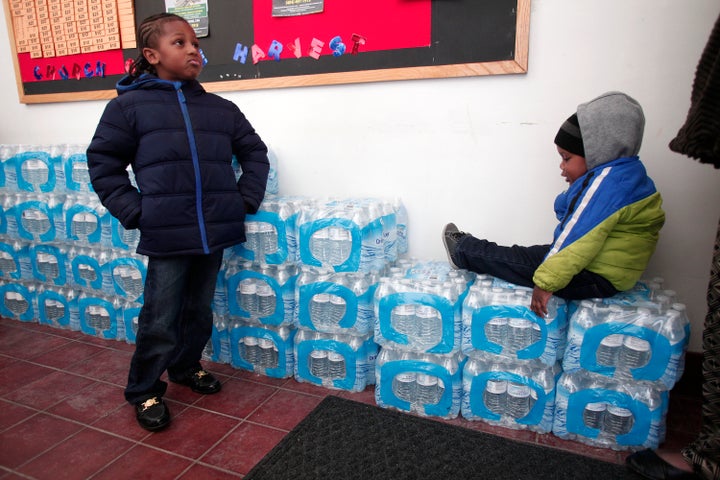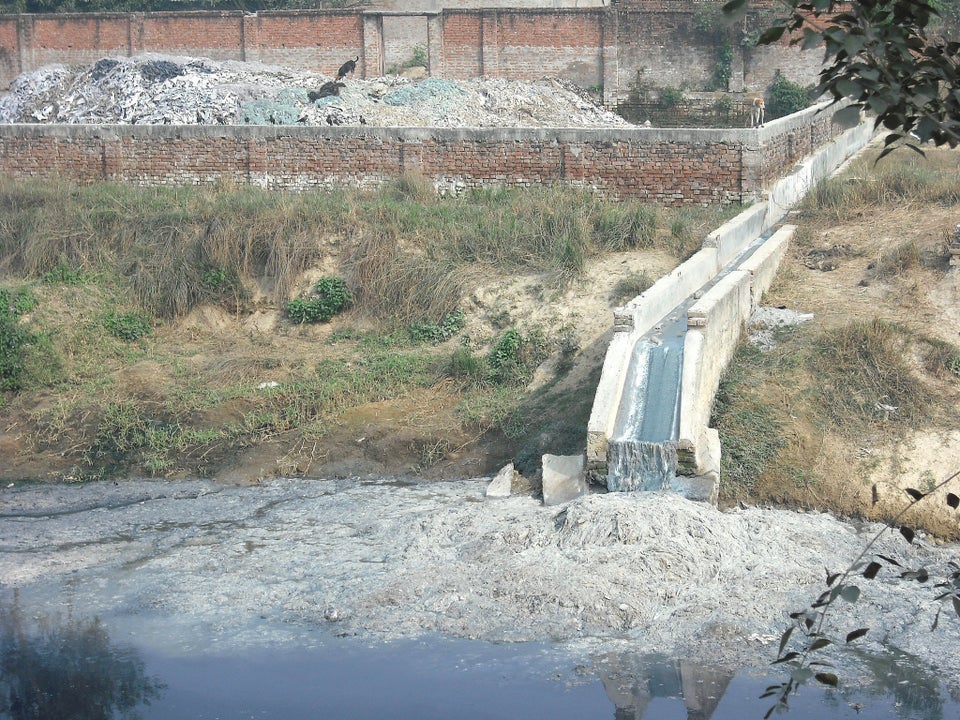
Flint, Michigan, isn't just dealing with tap water contaminated by lead. A Flint Journal-MLive Freedom of Information Act request revealed Saturday that 87 people were diagnosed with Legionnaires' disease as the city's toxic drinking water flowed into homes for some 18 months. Ten of those who were sickened died.
Although state officials say they can't pinpoint the source of the outbreak, Legionnaire's infections spiked sharply in Genesee County when Flint tried to save money by changing its water source from Lake Huron to the Flint River in April 2014. Two months later, there were six cases of Legionnaires' reported in Genesee County, and the number of cases remained elevated until Flint switched its water source back to Lake Huron in the fall of 2015.
"That just added to the disaster we were already facing," Michigan Gov. Rick Snyder said in a press conference last week, referring to the known lead problem. "But from a scientific or medical point of view, I don't believe that [a link between Legionnaires' and city water] can be made today."
See the spike in Legionnaires' cases in Genesee County, below:
Between 8,000 and 18,000 people in the United States are hospitalized each year with Legionnaires' disease, a severe form of pneumonia, according to the U.S. Centers for Disease Control and Prevention. Most people contract the noncontagious disease by breathing air contaminated with Legionella bacteria, which grows in moist environments such as water towers, swimming pools and water systems. Symptoms of the disease include high fever, trouble breathing and muscle aches; people with weakened immune systems, those older than age 50 and smokers are all at a higher risk for contracting Legionnaires'.
While Legionnaires' disease drummed up considerable media attention when an outbreak in the Bronx killed 12 and sickened 120 in September 2015, it's not unusual for sporadic outbreaks to crop up around the country each year.
Flint's 'astonishing and unacceptable' water problem
Should Flint's Legionnaires' outbreak prove to be connected to the city's water, it would be the latest in a series of public health catastrophes connected to the 2014 drinking water switch. So far, public health officials have identified E.coli bacteria, trihalomethanes (a chemical byproduct of water disinfectants) and most notably, lead, in Flint's drinking water.
Lead, which leached into the municipal drinking supply when the Flint River's corrosive water interacted with the city's old piping, can cause irreversible long-term cognitive impairment and is especially dangerous to young children, whose brains are still developing, and the unborn children of pregnant mothers.
Although the water source was changed back in fall 2015 after lead was discovered, the damage was done. The number of children with elevated blood-lead levels (≥5 micrograms per deciliter) nearly doubled in Flint after the water switch, Dr. Mona Hanna-Attisha, the director of the pediatric residency program at Flint's Hurley Medical Center, pointed out in September.
While the government's threshold for lead poisoning is 10 micrograms per deciliter of lead in blood, experts increasingly agree that there is no safe level when it comes to health risk. And lead poisoning is often silent, meaning lead-poisoned children might not show any signs of damage until years or even decades later. That damage can include anemia, kidney dysfunction and high blood pressure, as well as increased aggression and problems with the criminal justice system.
"Your development is progressing so rapidly at those early ages," Hanna-Attisha previously told HuffPost. "You’re going to be carrying that exposure forever."
Here are the contaminates associated and believed to be associated with Flint's water:
Even today, Flint's water isn't safe to drink because compromised supply pipes haven't been replaced. The National Guard is distributing bottled water and water filters to residents and officials are unable to say when the water will be potable again.
President Barack Obama declared a state of emergency in Flint on January 16, ordering disaster relief efforts to Genesee County following plea for federal assistance from Snyder and a letter from the Congressional Black Caucus.
"The timeline for the water issues, which have led to a state of emergency being called for the City of Flint, are astonishing and unacceptable," the caucus members wrote. "The lack of proper oversight and action has led to tens of thousands of citizens being exposed to toxic levels of lead in their drinking water and demands a thorough federal response."
What is being done about Legionnaires'?
The Michigan Department of Health and Human Services is currently investigating the 2014-2015 Legionnaires' outbreak in Genesee County.
"The State of Michigan is treating this situation with the same urgency and transparency as the lead response in the city of Flint," according to a statement published on the department's website.
Also on HuffPost:




